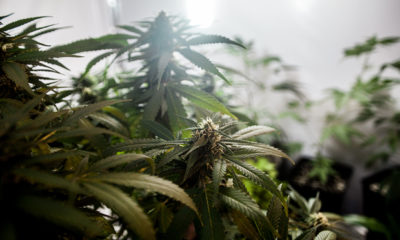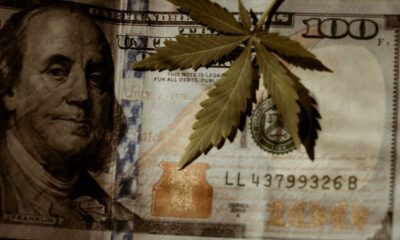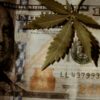
Economics
From Outlaw to CEO
A historical exploration of how distributors shaped the modern cannabis market.
The modern cannabis industry continues marching towards legalization; 29 states have medical cannabis laws of some sort, although access to medicine varies radically. Several states also have forms of adult-use legalization and there are new and exciting innovations in products and packaging almost daily. The market has come a long way from the shadows of prohibition, cannabis is on track to be a multi-billion dollar legal industry in the 21st century. But, although cannabis has been widely used and cultivated for thousands of years and remains popular today, it did not become regularly available commercially until the 1960s, where the march began.
1937-1960s: “Out of the Dark, Into the Light”
In the early 20th century, a very small percentage of Americans used cannabis and use was primarily concentrated in African-American and Latino communities, where penalties for use and possession were severe. When the counterculture began to emerge in the 1960s, white college students began using cannabis too. The first dealers were enterprising youth who would travel to Mexico and smuggle back a kilo or two to sell to friends.
The 1970s: Let the Smuggling Begin
As the ’60s turned into the ’70s, we began to see the rise of the professional smuggler and dealer. Bold young men, and it was almost all men in those days, began bringing in large loads from Mexico and then later Columbia and Thailand. Returning Vietnam veterans brought home phenomenal cannabis; Vietnamese Black and Laotian Red were many times more potent than the Mexican most folks were smoking. At the same time, a “back to the land” movement was taking place. Northern California hippies were moving to the countryside of what is now the Emerald Triangle to commune with nature and live free. They brought their grass with them and began planting the seeds of the modern cannabis industry.
The earliest strains, mostly equatorial sativas, were not well adapted for the United States. Original Skunk strains from Afghanistan started turning up in the 1970s and were ideal for Northern California, which is on roughly the same parallel as Afghanistan. These new strains flourished and commanded top dollar in the market. In 1978, Mexican or Columbian sold for around $300 a pound, whereas Northern California sinsemilla could fetch up to $2,000 a pound.
The 1980s: Big Brother is Watching
The 1980s saw an explosion of sun-grown California cannabis, fueled by the 1970s imports of Afghan. By the mid ’80s, however, Reagan’s War on Drugs forced many growers inside, resulting in cannabis becoming stronger and more diversified than ever. Hidden from the prying eyes of law enforcement, breeders, especially in Holland, took the flowers to ever more potent heights.
The 1990s: Marijuana Becomes Medical, Again
By the early ’90s, AIDS had ravaged the gay community and many people had turned to cannabis for relief. This was the beginning of the medical cannabis movement. Informal collectives began forming to provide medical cannabis for their members. Dennis Peron, an openly gay Vietnam veteran who had watched many of his friends suffer and die of AIDS, illegally opened the first modern cannabis dispensary on the corner of Church and Market streets in San Francisco. At that time, the choices of medicine were pretty much limited to flowers and brownies. “Brownie” Mary Rathbun distributed thousands of her famous confections for free or at very low cost to the sick and dying. While the City and County of San Francisco respected Peron’s compassionate operation, the federal government raided and closed the dispensary. Shortly thereafter, California’s Proposition 215 passed, legalizing medical cannabis in the state.
During the latter part of the decade, concentrates began appearing, starting with kif. Around 1998, the first of a new form of concentrates, water hash, made it’s way from Amsterdam to California. This new product took the scene by storm and was soon widely available in the few dispensaries that existed at this time. Quality varied radically, much of it being quite poor.
The 2000s-Present Day: The Green Rush
In the dawn of the new millennium, more dispensaries opened and more patients demanded higher quality medicine. Inevitably, demand lead to innovation and concentrate makers began exploring solvent-based hashes. The first butane hash oil (BHO) came out around 2000. Around the same time, Steve DeAngelo of Harborside perfected the technique for making water hash a sand-like consistency. The sand had one major advantage over pressed hash, it didn’t mold. It was also easier to sprinkle on pipes, blunts and joints, thereby introducing many people to the effectiveness of concentrated cannabis products.
By the mid 2000s, there was an explosion in solvent-based hash, specifically BHO. The earliest samples were horrific. The hash often reeked of the sulfur, which was used as an odorant, because people had not learned about purging this toxin out. Water hash was dominant up until about 2010 when the dabbing phenomenon began.
The Ogden Memo really ushered in the Green Rush in 2009 by seemingly giving the green light for dispensaries to open up en masse. Thousands opened throughout California and also spread to Colorado and Michigan. Maine also jumped in, becoming the first East Coast state to open a dispensary. The rise in distribution outlets encouraged entrepreneurs to jump in and begin producing an incredible array of marijuana-infused products (MIPs) on both small and large scales. Professionally packaged cookies, pies, cakes, candies, topicals, tinctures and capsules of all shapes and sizes flooded the market. C02 hash joined BHO and water hash as yet another form of medicinal cannabis concentrate, ushering in the modern era.
Today, patients have access today to an incredible array of MIPS. Almost anything is available. Sodas, coffee and teas are on offer, as are capsules, tinctures, pizzas and ice cream, the list is endless. The majority of these products are produced by small mom and pop operations, providing income for thousands throughout the medical states. Some larger companies, such as Dixie Elixirs in Colorado, have also become quite successful and employ many people. Concentrate companies such as Essential Extracts and The French Laundry are also bringing name brands to their hash. Patients can now recognize a quality product by it’s branding. The quality of packaging, especially of edibles, has also risen so dramatically that many of the products on shelves now look like they could be sold at Walgreens or CVS.
Just as in the Gold Rush days, the folks selling the picks and shovels were more successful than those panning for the gold. The future of cannabis and the products needed to consume it has never been brighter than it is today. In less than 20 years we have gone from no states with access to cannabis to almost half, with the rest rapidly following. Who knows what the future will bring in terms of new products and new economic opportunities. Cannabis, in all its myriad forms, is truly an American success story.
Originally published in Issue 10 of Cannabis Now. LEARN MORE
TELL US, what changes have you seen with cannabis over your lifetime?























